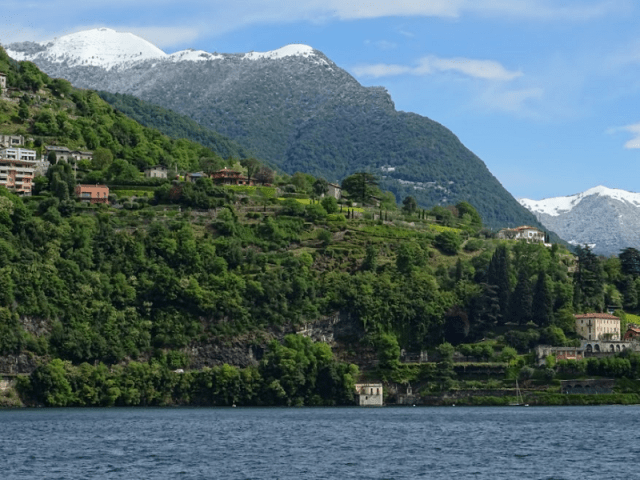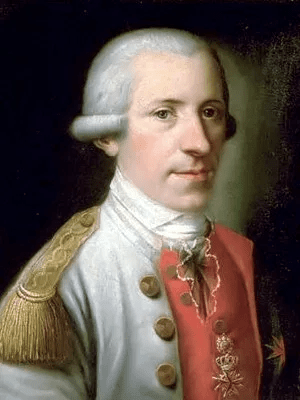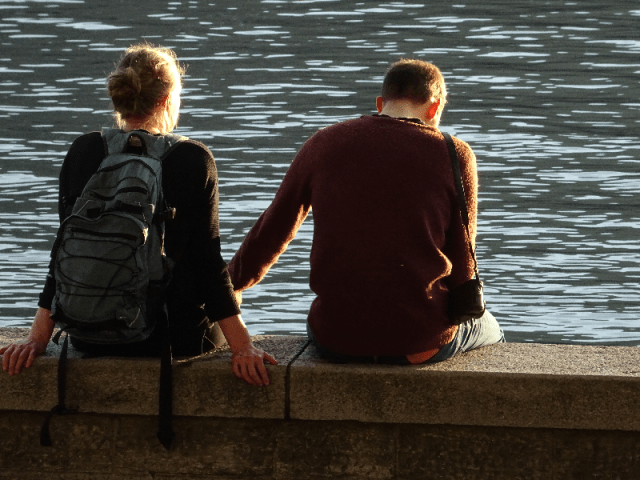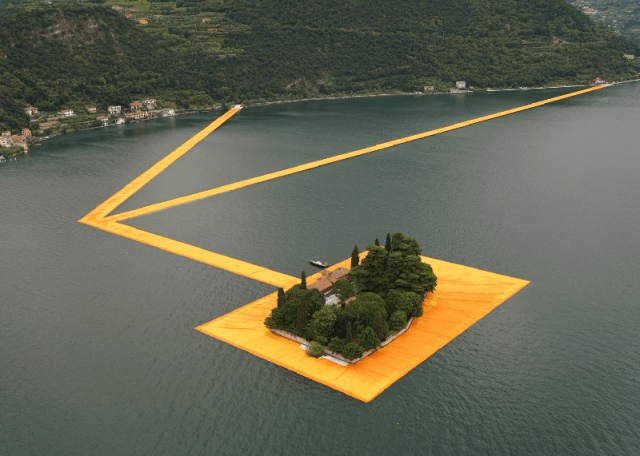
Argegno and the start of the Val D’Intelvi
Are more tourists coming to Lake Como these days? Data on this for 2018 has recently been published covering all of Lombardy and its individual provinces including both Como and Lecco for the two legs of our lake. The data does reveal the increasing importance of tourism to the local economies of both provinces, with a breakdown on the country of origin of visitors and on how long they stay here. It also reveals the broad differences in the type of tourism on offer in Como or Lecco. We also see how many people may prefer to visit Lake Iseo or Lake Maggiore. Yet the figures provide no insight into why people choose voluntarily to visit or to live in any of these provinces rather than just stay at home or in their mother country. The data cannot explain what brought me as a resident or the 1,372,787 visitors in 2018 to pick Como as a location that may possibly be good for the soul.
Now – The Figures

Towards Lezzeno
InLombardia, the Lombardy Region’s tourist board, has in recent years been actively campaigning to encourage more people to visit Milan and the other provinces in the region. The figures for 2018 show their efforts are paying off with a 3.5% increase in numbers since 2017 but 26.4% since 2013. In 2018 , out of a total of nearly 17,200,000 visitors to Lombardy, 7,800,000 went to Milan and 1,370,000 came to Lake Como making us more popular than Lake Maggiore (Province of Varese) or the Valtellina (Province of Sondrio) but less so than Lake Iseo (Province of Brescia). For Como this represents a significant 34.9% rise in numbers since 2013.
On average across Lombardy, around 50% of visitors originate from outside Italy. However for Como the percentage of foreign visitors climbs to 77.5%, ahead of Lake Iseo with 72% or the other leg of the lake in Lecco at 62.6%. Countries of origin are recorded for Lombardy as a whole but not for the individual provinces. The top ten countries in descending order are 1) Germany 2) United Kingdom 3) Netherlands 4) United States of America 5) France 6) Switzerland 7) Japan 8) China 9) Belgium 10) Russia. The Provinces of Sondrio (the Valtellina), Cremona, Lodi, Monza, Mantova and Pavia all have a majority of Italian tourist visitors.
There has been a radical change in the type of lodging available with a decline in the number of hotel beds across the region except for Como where there has been a steady annual increase of 1.6% over recent years. The reduction in beds is most marked in the two or three star category. Conversely there has been a massive increase in the number of non-hotel beds. This category includes holiday homes, bed and breakfasts, ‘agriturismo’ and camp sites. Since 2015 this category of accommodation has increased by a massive 302% in Como with a 59% increase recorded in just the one year from 2017 to 2018. Lecco and Sondrio have also seen significant increases since 2015 of around 150% in this category.
There are also marked differences in the length of visitors’ stay. The average for the whole of Lombardy is 3.64 days per visitor with Como just below this at 3.32 days although those from abroad tend to spend less time here, 2.6 days. The challenge is of course to get people to stay longer and Brescia (Lake Iseo) seems to manage this well with an average stay of 5.72 days.
Brescia and Lake Iseo seem to be doing a number of things well and maybe there is something that Como and Lecco could learn from them. The figures also reveal essential differences in the experiences on offer on the Lecco leg rather than Como with Como maintaining or even increasing the number of luxury hotel rooms as well as increasing the non-hotel options. Lecco is managing to increase the number of visitors but less are coming from abroad than to Como and they are also favouring lower cost accommodation options.
Then – The Origins of Tourism

Bellagio from Lezzeno
So we know how many people visit the lake, roughly where they come from and how long they usually stay. Let’s try now to find out why we are all here? The answer is to some extent obvious, in that the lake has its natural beauty. From Roman times Lake Como, known as Lario, was recognised as having a particular appeal with unique qualities. Pliny the Younger was one of the first to describe the attraction of the mild, fertile lakeside contrasting with the dramatic mountain backdrop. He had a villa built for him on its shores, and his enthusiasm for the lake helped give birth to the concept of ‘Il Mito di Lario’ – or the fame of the lake. As time passes, the ‘Mito di Lario’ will form the basis for the growth of an ever expanding and evolving tourism industry. However, tourism as such is a relatively modern phenomenon and the concept of visiting far-away lands for pleasure could only take root once fundamental infrastructure issues were resolved.

From lakeside to mountain – Lake Como’s contrasts
We have the diary kept by a manservant of an English nobleman, Sir Edward Unton, who travelled through Italy in 1563 to give us some insight into the concerns and interests of early travellers. The quote below reveals as much by what it fails to mention and the relative space given to describing Milan compared with the throwaway reference to Como.
‘Milan is a fair great city well-fortified and situated in a fair country having on the one side a very strong castle whereunto all the city is in subjection. This city is very populous and full of artisans of all sorts and much more than other cities I have seen. From thence the 1st October to bed to a city of the same dukedom called Como, not fair standing at the foot of the mountains and the furthest city towards Switzerland. In this part of Lombardy is indifferent good food for travellers, the people notwithstanding are very subtle and crafty given like the rest of Italians to deceive strangers.’
Richard Smith, the diarist, was unimpressed by the lake, the local inhabitants or the cuisine with his focus definitely on urban culture and his preference decidedly for Milan. His prejudice against Italians in general was matched at the time by the overall contempt of the Milanese towards Como – after all it was only four hundred years previously when the two cities were at war with each other. However, aristocrats, who began to visit the area in increasing numbers from a century later as part of their cultural ‘Grand Tour’ of Europe, were more favourably impressed. Some even settled in the area and established neo-classical villas and gardens on the lake shore adding to the lake’s fascination for successive generations.

Hotel Villa D’Este in Cernobbio
If Elizabethan aristocrats were not yet interested in the lake, Italians were. In 1568 Cardinal Gallio of Como commissioned the architect Pellegrino Pellegrini to build the Villa D’Este in Cernobbio as his summer home. Villa Monastero in Varenna, originally a monastery as its name suggests, was acquired as a home for the Mornico family in the early 1600s. Villa Pliniana, originally built in 1573, was bought by a branch of the Milanese noble Borromeo family in 1590. Villa Dell Grumello on the edge of Como was built in 1570 for Tommaso D’Adda. It would later pass into the hands of the Odescalchi and then the Giovio family whose ancestor Paolo had built one of the early lakeside villas on the current site of the Villa Gallia in 1543 to house his collection of paintings.

Giambattista Giovio, author (1748-1815)
The Grand Tour, undertaken as part of the intellectual education of young Northern European aristocrats and focussing initially on the major cultural cities of Europe, did much to develop the concept of ‘tourism’. It introduced the concept of travelling for its own sake, for the experience and for the opportunity to learn and then to exchange ideas and opinions with other travellers. One such journey was undertaken in 1777 in the company of Alessandro Volta by the author Giambattista Giovio, a member of a long-established Como aristocratic family. Giovio kept a journal of their journey together through Switzerland including their meeting with Voltaire in his home town of Ferney, just over the border from Geneva.
Giovio was perhaps the most influential person in his day to encourage interest in visiting Lake Como. He published ‘Como and Lario’ in 1795 and his further text on travelling around Lake Como was published posthumously in 1817. These books helped to broaden interest in travel beyond visits to sites of antiquity into locations which might inspire through their beauty or dramatic quality.
Then – From Spectacular to Sublime
In 1817 Stendhal visited Lake Como and described it as ‘sublime’. Sublime is a word that in modern parlance has lost most of its original power and significance similar in a way to ‘awesome’.

Villa Pliniana, Torno – Percy Bysshe Shelley and wife, Mary considered buying this on their visit to Lake Como in 1818
When as a teacher I attempted to introduce students to the Romantic Poets such as Shelley, my personal challenge was trying to get my head round the true meaning and importance to these writers of the sublime – a metaphysical almost mystical belief in the powers of man and nature. So, whatever the sublime might be, for Stendhal and visitors like Shelley and his young runaway bride Mary, Lake Como had it. The Shelleys were so attracted to the lake that they seriously looked into the possibility of purchasing Villa Pliniana, now a luxurious hotel but a dilapidated albeit romantic wreck when they viewed it in the Spring of 1818.

Sublime Lake Como
The Romantic period ushered in a golden age for Lake Como with so many writers, artists and musicians deciding to visit and record their impressions. Sheer sided mountains reflected in the calm waters, snow-capped peaks above temperate shores, small towns with Romanesque bell towers rising above the surrounding chestnut groves – these were the never changing elements which had enchanted visitors from Pliny’s day.

The ancient northern Roman gateway into Torno
But for the Romantic sensibility, the beauty and drama of these natural elements conveyed a sense of freedom, awe in its original sense combined with the boundless possibilities of creativity. What could be a better setting for Verdi to complete ‘La Traviata’ or for Rossini to compose ‘Tancredi’ over a three day stay at the Villa Pliniana, or for Bellini to collaborate with Giuditta Pasta, his mezzo-soprano muse, crossing the lake from Moltrasio to her villa in Blevio?
Cardinal Gallio’s summer villa in Cernobbio was acquired in 1815 by Princess Caroline of Brunswick, the estranged wife of the English King, George IV. It was she who renamed it the Villa D’Este having bought it as her home in exile from the London court. Lake Como had by now consolidated an international reputation for its charm.

View of Menaggio from the sketchbook of JMW Turner, 1842
Now – From Sublime to Serene
As the nineteenth century progressed, the wealthy homes of aristocrats either changed hands with or were accompanied by those built for the financiers and industrialists making their fortunes from Northern Italy’s growing industrialisation. As we know, the increase in wealth for the few was also matched by a partial mastery and a general deterioration in the quality of the natural environment matched by an increase in the pressures of everyday life.

From sublime to serene – Lake Como becomes ‘romantic’.
People no longer tended to travel as much for intellectual or spiritual enrichment as they did in search of some peace and tranquillity in a bid to regain equilibrium prior to returning back into the commercial fray. The dawn of the modern world had made the Romantics’ concept of the sublime impenetrable and the search was now more directed to seeking serenity, a concept easier to appreciate even if hard to achieve. Since the quest for serenity was bound to be more in demand than the esoteric search for the sublime, tourism on Lake Como was set for further development. However the lake retained, simplified and then amplified its ‘Romantic’ epithet, becoming to this day a popular location for weddings.

Chiesa di Sant Sisinnio, above Argegno – Winston Churchill, from sketches done in July 1945
Some notable figures in the political world have sought serenity on the lake including Winston Churchill. He visited here immediately after he lost the post war elections in the United Kingdom in July 1945. He started his holiday staying for two weeks in Moltrasio as a guest of an industrialist. He spent much of his time sketching and painting but his stay has also raised speculation that he may also have been trying to track down and dispose of incriminating correspondence between him and Mussolini.
Konrad Adenauer rented a villa in Griante above Cadenebbia for at least two periods a year during his time as the German Chancellor after the last war. Adenauer had one of the most stressful roles in modern politics seeking to drag his country out of the shame and bankruptcy of the Nazi years while also laying the foundations for ongoing future peace in Europe. The Villa la Collina provided the serenity he required. Maybe following Adenauer’s example but years later, the Secretary General of the UN, Kofi Annan, on his retirement in 2006, spent three months staying above Menaggio.
He remained incognito for most of this time but feared his cover may have been blown one day when, while out buying a newspaper, someone seemed to recognise him stating, ‘I know you – you’re Morgan Freeman!’ He was also a regular visitor to the Ambrosetti Forum, the annual meeting of international politicians and industrialists held at Cernobbio’s Villa D’Este. In all he visited Lake Como six times dining on one of the last occasions as guest of George and Amal Clooney in Laglio at their Villa Oleandra.

Rezzonico in the Comune of San Siro
The Clooneys have done more than any others to publicise the lake in recent years, in spite of the fact that other wealthy industrialists like Richard Branson and various highly anonymous Russian oligarchs also own property here. This summer the Clooneys entertained Barak and Michelle Obama as house guests. No doubt they also appreciated the soothing restorative benefits of staying on the serene lake.
The Future
The one constant throughout the whole long period in which tourism has grown on the lake is its basic attraction. Lake Como has a unique combination of the lush temperate lakeside fringing the calm water which in turn reflects the dramatic mountainsides with their gullies dividing off the individual mountain communities.

Going north from Laglio from Brienno to Argegno, the mountains fall so steeply down to the lake that not even the mountain paths up to the alpine pastures are readily maintained.
Fortunately these features are largely protected by the local geology, which may also discourage the development of a mass tourism and continue to hinder too much further urbanisation. The current communications infrastructure fails adequately to cope with the number of summer visitors. The father of Lake Como tourism, Giambattista Giovio knew back at the start of the 1800s how important roads were to the area’s wealth and development. Now however we need to develop alternative ecological solutions to enhance the communications network.

Bulgarian artist Christo’s Floating Piers on Lake Iseo
Como may also be able to learn a lesson or two from Brescia on how they have achieved their higher than average length of visitors’ stay in their city or on nearby Lake Iseo. Their province includes Franciacorta, a wine producing area best known nowadays for sparkling whites (spumante rather than prosecco). The wine quality is generally good but the wine’s success in recent years is due to superlative marketing. The province must have noted this success and applied similar imagination in promoting their lake recognising the part culture can play in attracting attention.

Villa del Grumello between Como and Cernobbio, owned by the Odescalchi and the Giovio families, where Giambattista Giovio entertained his future son-in-law, the poet Ugo Foscolo – Italy’s equivalent to Lord Byron.
Como too is not short of various marketing initiatives including cultural ones such as Grand Tour 2.0 (not to be confused if searching online with a popular TV programme about boys in fast cars). However they lack a certain impact maybe because they are underfunded or don’t receive enough institutional support.

Local advertising for Airbnb, one of the disruptive technologies radically changing the accommodation on offer on Lake Como in particular but also across the whole of Lombardy.
One positive aspect for Como is the increase in the range of accommodation now available providing more options for those on restricted budgets. Destinations can now include some of the mountain communities as well as those on the lakeside. Those looking for luxury have also seen their options increase in recent years, with an increase in capacity amongst luxury hotels and with the birth of possibly an entirely new category – the super luxury B&B.

Villa Platamone, luxury bed and breakfast accommodation in Como – creating a new category of top end options to rival hotels such as Il Sereno or Villa Pliniana in Torno.
The general view is that Como’s local administrations over recent years have been somewhat complacent in their management of the city. It is not hard to find aspects to criticise ranging from the totally scandalous flood defence project to the lack of any noticeable increase in cycle paths and the generally tired condition of the public spaces. Yet it would feel particularly alien if Como was to become suddenly efficiently and conscientiously managed. The city fortunately has as many charms as faults and the charms of the lake are resilient to administrative indifference since they are deeply loved and appreciated by local residents. As tourism trends change, we can remain confident that the lake will continue to attract visitors from around the world for years to come.
Related Articles:
Read more about Como in the height of the tourist season.
Blevio was the home of Giuditta Pasta, Bellini’s muse and Europe’s most popular diva in the nineteenth century.
Villa D’Este has a long and varied history including this incident that caused a nationwide scandal after the last war.
Visitors need to know if the lake is safe for swimming. This article outlines what is monitored, the data at the start of the 2019 season, and where further updates can be found.
The Odescalchi family, former owners of both Villa del Grumello and Villa Olmo, produced a pope, Pope Innocent XI, and established a noble dynasty across Europe. A summary of their history is included here.
Mention is made above to Winston Churchill possibly seeking to retrieve documents that may have been seized by partisans following Mussolini’s capture and execution on the lake. This article describes the last days of Mussolini and his mistress as they tried to avoid the partisan insurrection in April 1945.
Como Companion recently visited Villa Platamone, on the launch of this super luxurious Bed & Breakfast.












Tourism on lake Como: Thank you for another inspired and inspiring article! We thoroughly enjoyed it.
LikeLike
Thanks very much for your encouragement. Its wonderful to get positive comments like yours!
LikeLike
Very helpful thank you !
LikeLike
Pingback: Είναι ασφαλής για επίσκεψη στη λίμνη Κόμο το 2023;
A translation of the comment ‘The lake receives about 1.4 million visitors per year, a truly amazing’
LikeLike